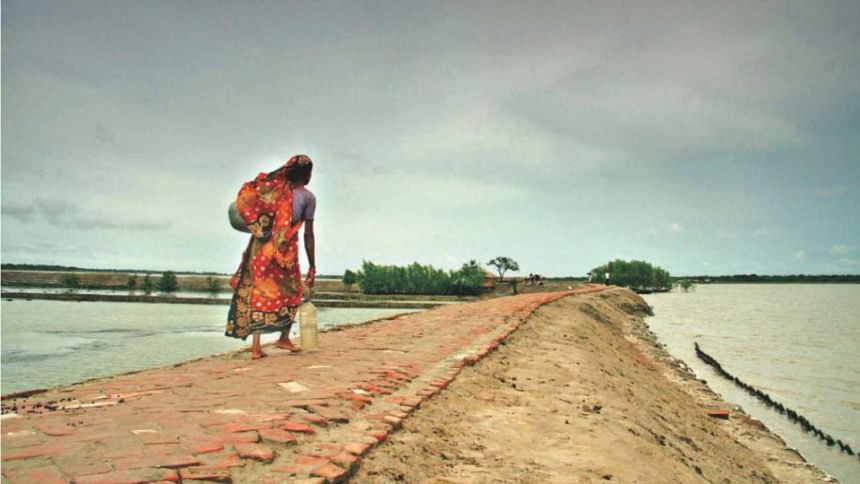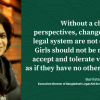The untapped potential of women in water resource management

The International Women's Day (IWD) has been observed this year with a call to build a gender-balanced world. The day is an occasion to celebrate the social, economic, cultural, and political achievements of women. It also marks a call to action to accelerate gender parity, with a campaign slogan of #BalanceforBetter. The world now needs a balanced gender spectrum which addresses not only "women's issues" but an approach that involves policymakers, community leaders, religious leaders, media, and various professionals—both women and men.
While women are making progress in many sectors and taking leadership roles, in terms of water resources and rights, they still lack a major voice. Women play a critical role in providing, managing, and safeguarding water resources and yet their participation in water governance is not visible. Poor understanding of the distinct roles and contributions of men and women often leads to a lack of recognition of their needs and interests in policies and programmes linked to water management. This lack of recognition can result in a failure to meet the global social, economic and ecological targets such as the Sustainable Development Goals (SDGs) 2030. On the other hand, interventions aimed at balancing gender relations in water-related domains can help in furthering gender equality more broadly.
Globally, pressure on water resources continues to grow as millions of people lack secure access to water due to growing competition over natural resources. This can be caused by infrastructure development, agricultural and industrial expansion, and effects of climate change. In South Asia alone, more than 700 million people live in river basin areas, many of whom dependent on water resources. Due to the increasing demand for water, their lives and livelihoods are adversely affected, causing poverty and injustice. This could well be managed with an inclusive and accountable water resource management structure within the country and foster cooperation at the regional level among governments. But the water governance system is not always inclusive of people's voices, especially the riverine communities, which are not always represented at the policy level.
Meanwhile, water resource governance has become a major development issue as the demand for water continues to increase. Governance efforts should consider who is involved, who is excluded, who benefits, and who loses when decisions are made about the development of river basin resources. Due to the absence of a participatory water resource management system, we have observed that riverine people can be negatively impacted.
This scenario is further accentuated by women's exclusion from the process. Women often play a vital role in the livelihood systems of rural and riverine communities but are less likely to have access to information and decision-making processes. Women's role in water governance practices and structure is hindered by gender-related biases and they face constant challenges in acquiring economic resources. They are often disproportionately disadvantaged when water regimes change and their voices are the least heard in decision-making on water issues. To address this, several efforts have been made to put gender issues on the international water governance agenda, focusing on gender mainstreaming in the water sector within the Millennium Development Goals (MDGs). More recently, the Sustainable Development Goal (SDG) 6 on water and sanitation also calls for special attention to gender equality. These policy efforts, however, do not adequately address the persistent disadvantages that women experience in transboundary river contexts, especially the effects of hydropower on fisheries and therefore on poverty and food security.
In South Asia, women are culturally less able to express their views. Deep inequalities persist from the household level to regional and national governance. There are other factors which further aggravate the situation such as low levels of education and experience, lack of self-confidence, religious and patriarchal norms and values that exclude women from public life, and lack of family support with respect to domestic responsibilities.
Women sustain life through their relationship with water. Women in many countries are often the primary users of water and if given the opportunity to lead, they can provide, manage, and safeguard water resources as they develop a set of unique knowledge about their ecosystems and biodiversity through their work in their homes, communities, and societies. From our experience in the Mekong river basin in South-East Asia, we have seen that when women are involved in decisions regarding the use of their resources, development benefits are more likely to be stronger, equally shared and sustainable.
Despite this, gender considerations are still seen as irrelevant in major decisions on large-scale water management issues like construction of dams and hydropower projects, river protection embankments, or water trade. Policy decisions are mostly devoid of women's participation and as a result, they are affected more than their male counterparts. It is imperative that women are given equal representation.
The good news is that despite being faced with all these odds, women in South and South East Asia are coming forward to address water governance issues and raising their voices to demand their water rights. We have been working on water governance and women's participation in the process in Asia since the early 2000s. What we have found through working with women is that if opportunities are created, women can stand up for their communities and become the voice of the movement. Oxfam and its partners are supporting women in the region so that they can build their capacity to help themselves as well as the poor and marginalised people to gain control over their own lives.
However, this is only the beginning of the journey and ending all forms of discriminations and inequalities against women and girls in the water sector would require addressing the power imbalances between women and men through an inclusive and participatory approach. In order to reach substantive equality, water governance regimes and institutions must take affirmative action and bear in mind that decisions about water allocation and access to services can either challenge or further worsen these inequalities. Targeted, committed and continual efforts are needed to create an enabling environment for women's participation and leadership in water governance. This includes addressing underlying causes of gender equality; increasing women's knowledge, skills and confidence to take a more active role in decision-making; and creating opportunities for women to participate and have their voices heard. Policy makers need to understand the needs of women with respect to the use of rivers and water resources and design and formulate policies and programmes that benefit women and men equally.
Jyotiraj Patra works with Oxfam's Transboundary Rivers of South Asia (TROSA). TROSA is a regional water governance programme working in the Ganges-Brahmaputra-Meghna (GBM) and Salween transboundary river basins. It is supported by the government of Sweden. The views expressed are personal.










Comments